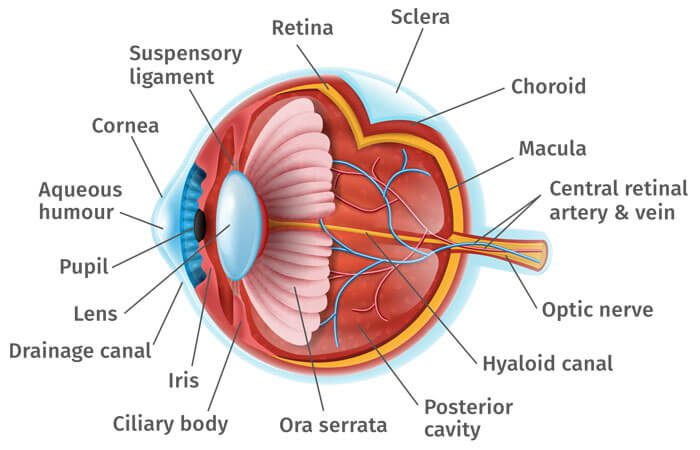About The Center
Felis dictum magnis varius nulla pellentesque tortor pharetra, aptent vitae morbi vulputate accumsan penatibus cum, aliquet rutrum curae conubia est mattis. Mattis vel feugiat ante auctor tortor varius, habitant cubilia pellentesque mi bibendum, iaculis elementum quis ut libero. Pretium porttitor dignissim congue egestas rutrum erat proin iaculis vitae libero arcu euismod, feugiat nam eros sociosqu nisi interdum lacus integer nisl eleifend.
Cataract Procedure
About Cataract Surgery
The purpose of your lens is to bend (refract) light rays that come into the eye to help you see. Your own lens should be clear, but with a cataract it is cloudy. Having a cataract can be like looking through a foggy or dusty car windshield. Things may look blurry, hazy or less colorful.
The only way to remove a cataract is with cataract surgery. Your ophthalmologist will recommend removing a cataract when it keeps you from doing things you want or need to do. During cataract surgery, your cloudy natural lens is usually removed and replaced with a clear artificial lens. That lens is called an intraocular lens (IOL). Your ophthalmologist will talk with you about IOLs and how they work.
Some people cannot have an IOL. They may have another eye disease or have problems during surgery. For these patients, a soft contact lens, or glasses that provide high magnification, may be suggested. The Eye Consultants of PA describe the various options for cataract treatment in detail on their website.
Fortunately, cataract surgery is safe, effective, and quite common. Thanks to advanced surgical procedures and lens implant technology, cataract surgery is not only one of the most frequently performed surgical procedures in the United States, it’s also one of the safest and most successful surgeries available.
YAG Laser Capsulotomy
YAG capsulotomy is a type of laser eye surgery that’s used to treat a specific complication of cataract surgery known as posterior capsule opacification (PCO). This problem is caused by scar tissue forming behind a lens implant after cataract surgery. The complication may occur a few weeks after cataract surgery, but also could take years before it appears.
Up to 20 percent of those who’ve had cataract surgery experience PCO within three years of their surgery. The negative results are disconcerting and cause blurry vision and halos or glares around lights. The term YAG laser capsulotomy references the type of laser used, which is the yttrium aluminum garnet laser. The YAG eye procedure may also be used to treat epithelial cell ingrowth, a possible complication of LASIK eye surgery.
What Happens Before Cataract Surgery?

When you arrive at the surgical center, you’ll be given a mild sedative to help make you comfortable. A local anesthetic will be used to numb your eye. The skin around your eye will also be thoroughly cleansed, and sterile coverings will be placed around your head. You may see light and movement, but you won’t be able to see the surgery while it’s happening.
What Happens During The Procedure?
Under an operating microscope, a small, beveled incision, about 2.4mm wide, is made in the eye. In most cataract surgeries, microsurgical instruments are inserted through this opening and used to break apart and remove the cloudy lens from the eye. The back membrane of the lens (called the posterior capsule) is usually left in place.
Then, a plastic, acrylic, or silicone intraocular lens, also called an IOL, is implanted in the eye to replace the natural lens that was removed. Modern lens implants are permanent solutions to fix cataracts and improve vision, as they don’t need to be maintained or replaced in the future.
If you have cataracts in both eyes that require surgery, the surgery will be performed on each eye at separate times, usually four to eight weeks apart. Many people who need cataract surgery also have other eye conditions, such as age-related macular degeneration or glaucoma. If you have other eye conditions in addition to cataract, talk with your doctor.
How Long Does Cataract Surgery Take?
While the surgery may only take 20 minutes, you should expect to be at the Pennsylvania Eye & Ear Surgery Center in Wyomissing, PA for about 90 minutes on the day of your procedure. Also, even though the procedure and recovery times are short, we recommend taking the full day off from your regular routine in order to give your mind and body a chance to recover.
What Happens After The Procedure?
After the surgery is complete, your doctor may place a shield over your eye. After a short stay in the outpatient recovery area, you’ll be ready to go home. It’s common to experience halos, glare or starbursts around lights after cataract surgery, but this is often temporary as your eyes heal and adjust to the new lens. You can expect your vision to improve within a few days. Your doctor will schedule follow-up visits a day after your surgery, the following week, and a month later to monitor your progress.
Who Will Perform My Procedure?
Each of our cataract surgery specialists is board-certified and fellowship trained. That’s quality and experience you can trust. We utilize the latest technology and enjoy an excellent reputation and high patient satisfaction. From the first moment a friendly staff member greets you, throughout your treatment, you’ll receive compassionate care and personal attention. Here are just a few of our practitioners who perform this procedure:
What Are The Risks Of Cataract Surgery?
Like any surgery, cataract surgery carries risks of problems or complications. Here are some of those risks:
- Eye infection
- Bleeding in the eye
- Ongoing swelling of the front of the eye or inside of the eye
- Swelling of the retina (the nerve layer at the back of your eye)
- Detached retina (when the retina lifts up from the back of the eye)
- Damage to other parts of your eye
- Pain that does not get better with over-the-counter medicine
- Blurred vision
- Seeing halos, glare, and dark shadows
- Vision loss
- The IOL implant may become dislocated, moving out of position.
Cataract surgery will not restore vision lost from other eye conditions, such as macular degeneration, glaucoma, or diabetic retinopathy.
Your ophthalmologist will talk with you about the risks and benefits of cataract surgery.
Some material adapted from the American Academy of Ophthalmology.
Footer
Pennsylvania Eye & Ear
Surgery Center
Granite Point
1 Granite Point Dr #200
Wyomissing, PA 19610




